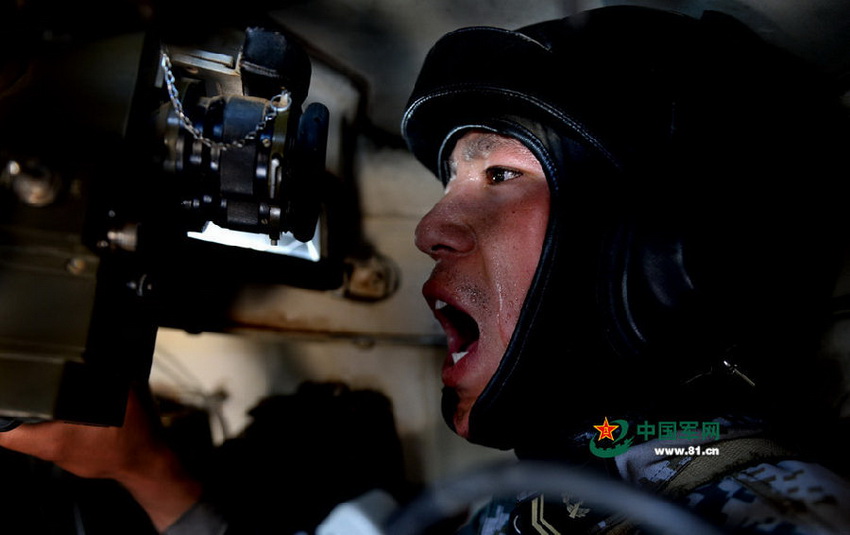 Not afraid of death
Not afraid of death
 Chen Guangbiao ads on A15 of NYT to host charity luncheon for 1,000 poor and destitute Americans
Chen Guangbiao ads on A15 of NYT to host charity luncheon for 1,000 poor and destitute Americans
 Passionate bar babies and fans feel the charm of World Cup 2014
Passionate bar babies and fans feel the charm of World Cup 2014
 US aircraft carrier docks in HK, welcomes PLA aboard
US aircraft carrier docks in HK, welcomes PLA aboard
 Graduation season: 'Take graduation photos to mark our love'
Graduation season: 'Take graduation photos to mark our love'
 College-student-turned nun becomes famous on Internet
College-student-turned nun becomes famous on Internet
 Japanese airplanes tail Chinese warplane in China's ADIZ
Japanese airplanes tail Chinese warplane in China's ADIZ
 China applies for UNESCO listing of Nanjing documents
China applies for UNESCO listing of Nanjing documents
 Picturesque scenery in Hongcun Village
Picturesque scenery in Hongcun Village
 Japan's PM vows to resume commercial whale hunt
Japan's PM vows to resume commercial whale hunt
CHONGQING, June 19 -- Southwest China's Chongqing launched its carbon trading market on Thursday, marking the operation of all seven approved pilot schemes in the country.
Sixteen transactions worth more than 4.45 million yuan (723,577 U.S. dollars) and involving gas emission quotas of 145,000 tonnes were reached within half an hour after trading started at 9:30 a.m..
A total of 254 companies with carbon dioxide emissions exceeding 20,000 tonnes each year were selected for the trading market. The government will impose emission quotas for them annually.
Banks will be encouraged to offer good financing services to the companies.
China began piloting carbon trading in 2011 and approved seven schemes in Beijing, Tianjin, Shanghai, Chongqing, Shenzhen, Guangdong and Hubei.
Under the schemes, enterprises which produce more than their share of emissions are allowed to buy unused quotas on the market from those that cause less pollution.
Construction of a nationwide trading network for carbon emission rights is expected to be completed in three years, said Sun Cuihua, vice director of the climate change department of the National Development and Reform Commission (NDRC).
Building a national carbon trade market has been listed as one of the tasks of the Communist Party of China's leading team for reform, said Sun at a forum held in Beijing last week.
Construction of the market needs definitions on carbon trading, reasonable quota plans and sound market adjustment mechanism, detailed regulation and improved registration systems, she said.
The government has pledged a 40 percent to 45 percent reduction of carbon dioxide intensity by 2020 from the levels in 2005 and is committed to making every effort to achieve the target.
Carbon dioxide emissions per unit of GDP had accumulatively dropped 28.56 percent by 2013 from the levels of 2005, or a reduction of 2.5 billion tonnes of carbon dioxide emission, according to the NDRC.
Last November, the commission announced the counting methods of greenhouse gas emissions in ten industries including iron and steel, cement and power generation.
Xie Zhenhua, deputy head of the NDRC, said enterprises had traded over 3.85 million tonnes of carbon emission quotas as of May 23.
The quotas were sold for 125 million yuan, making China a major carbon trader, second only to the European Union.
Meanwhile, seven institutions including the Beijing Environment Exchange and Tianjin Climate Exchange, have been approved to carry out voluntary carbon trading, according to Sun.
For a bigger development of carbon trading, efforts are needed to improve counting standards, price guidance systems and trading models, said Wang Jing, general manager of Tianjin Climate Exchange.
 Puzhehei: land of idyllic beauty
Puzhehei: land of idyllic beauty Chinese navy fleet visits Cape Town, South Africa
Chinese navy fleet visits Cape Town, South Africa PLA naval cadets toss their hats at graduation ceremony
PLA naval cadets toss their hats at graduation ceremony Graduation photo ideas: reliable alumnus and happy alumna
Graduation photo ideas: reliable alumnus and happy alumna Super daddies in 2014 World Cup
Super daddies in 2014 World Cup College girls take stylish photos to help enrollment
College girls take stylish photos to help enrollment Rebuilding the silk road
Rebuilding the silk road Top 10 Chinese products scoring World Cup goal
Top 10 Chinese products scoring World Cup goal PLA units hone their tank combat skills
PLA units hone their tank combat skills In Pictures: Female fans of World Cup
In Pictures: Female fans of World Cup China's top 10 representative architectures
China's top 10 representative architectures Photo story: A day of 'mini girl'
Photo story: A day of 'mini girl' Top 20 hottest women in the world in 2014
Top 20 hottest women in the world in 2014  Cute animals' leisure summer in zoo
Cute animals' leisure summer in zoo Exhibition of the Buddha held in Tibet
Exhibition of the Buddha held in TibetDay|Week|Month